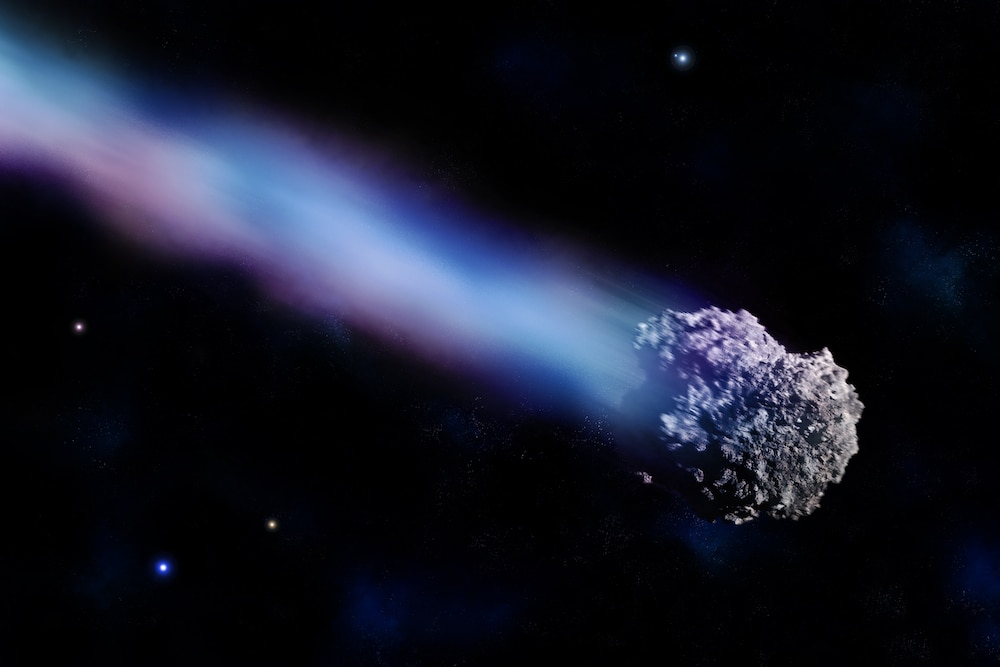Create a free profile to get unlimited access to exclusive videos, sweepstakes, and more!
NASA predicted an asteroid impact — and they got it right
If only the dinosaurs had this tech.

Earth has been punched in the face by asteroids before. It has seen everything from undetectable rock shards that burn up in the atmosphere to the monster-oid that triggered a mass extinction 66 million years ago.
NASA wasn’t there to do anything about the dinosaurs getting vaporized. However, the space agency was able to predict an impact with the type of accuracy that could prevent any sort of Deep Impact situations in the future (that was a comet in the movie, but you get the idea). Detect the offender and launch a spacecraft like DART to deflect it. Maybe this space rock was too small to be hazardous, but it could mean big things for predicting, well, bigger things.
Asteroid 2022 EB5 was first seen heading for us by astronomer Krisztián Sárneczky at the Piszkéstető Observatory in Hungary. After the observations were reported to the Minor Planet Center, NASA’s Scout impact hazard assessment system figured out the thing was going to come plummeting through Earth’s atmosphere. It zapped alerts to the NASA Planetary Defense Coordination Office and Center for Near Earth Object Studies (CNEOS).
Scout, which was developed by NASA JPL navigation engineer Davide Farnocchia, also flagged the object on its own webpage. Other observatories soon became aware it was on its way.
“Given a short arc of optical observations of a newly discovered object, Scout computes possible trajectories that are compatible with the observational data,” Farnocchia told SYFY WIRE. “It then projects them into the future to assess how close the asteroid may come close to, or even reach, Earth in the near future.”
The program doesn’t actually collect its own data. It relies on observations from anyone who can identify a flying object coming at Earth, from professionals to hardcore space geeks checking a sky watching app. What is pretty amazing is that Scout only had 14 observations, from only one observatory, all taken in less than an hour, to work with — at least until more observatories got in on the asteroid and increased the accuracy of those observations. Then everyone involved could get a better idea of its trajectory and where it was going to crash.
So where was it headed? Just two hours after 2022 EB5 was first observed, Scout predicted it would zoom through the atmosphere southwest of the Norwegian island Jan Meyen, which is about 300 miles off Greenland’s east coast, at exactly 5:25 p.m. Optical observations measured its position and brightness. Infrasound detectors were able to make out its approximate size to be some 6 1/2 feet. The only reason it was detected at the last minute was because it was such a faint micro-asteroid, at least compared to behemoths like dinosaur killer Chicxulub.
“From its brightness and orbit, we can derive a range of possible sizes depending on how much sunlight is reflected by the asteroid,” said Farnocchia. "Infrasound detectors measure impact energy, which is a function of the asteroid's mass and the impact velocity.”
You might not realize it, but smaller space rocks fall to Earth all the time. Random ones seem to fall out of nowhere about once a year. Scouring the sky for huge asteroids is also going to turn up smaller ones. These are only close enough, meaning bright enough, to be detected hours before they hit. Larger objects would be brighter and therefore detectable from further away. An asteroid’s trajectory gives away its impact velocity, which makes it possible to figure out the mass and size. Something threatening Earth in the future may be caught in time to be deflected.
Anything on a collision course with Earth will be spotted with even more accuracy in the near future. When the Vera Rubin Observatory in Chile starts watching what is going on above us in a few years, it will be able to see objects fainter than any current technology can squint at. NASA’s upcoming NEO Surveyor mission will also be on the lookout. This space telescope will have infrared vision that was also developed for discovering more near-Earth asteroids.
For now, Farnocchia is optimistic after what Scout was able to pull off.
“We confirmed that we can accurately model the trajectory and predict the impact location for an incoming asteroid,” he said. “The fact that the asteroid community could detect and recognize the upcoming impact for such a small object gives us a positive outlook.”


























